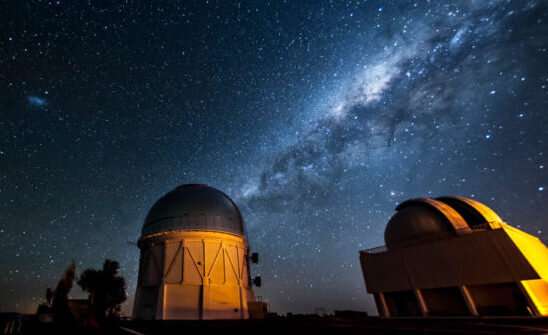First results from the Dark Energy Survey

The Dark Energy Survey (DES) program uses the patterns of cosmic structure as seen in the spatial distribution of hundreds of millions of galaxies to reveal the nature of "dark energy," the source of cosmic acceleration. Since it began in 2013, DES has mapped over 10 percent of the sky with a digital camera containing 570 million pixels and five optical filters that provide galaxy colors to estimates redshift distances. CfA astronomers are part of a team of over 400 scientists in seven countries working on DES, and last year it released the first set of data.
Cosmic voids occupy most of the volume of the universe. Unlike clusters of galaxies and other dense structures which are strongly affected by gravitational effects, not to mention processes associated with galaxy formation, these voids are the most underdense regions of the universe and have relatively simple dynamics. This makes them particularly straightforward probes for constraining cosmological parameters.
CfA astronomer David James is a member of the DES Collaboration and one of the co-authors on a new paper analyzing the first data release, with the aim of describing the relationship between the mass and light around cosmic voids. The scientists use statistical modeling to analyze both the 2-D distribution of galaxies and their 3-D distribution, the latter obtained from calculating galaxy distances from their photometrically determined redshifts. They find the two methods agree well with each other, and with models in which the physics of void environments is very simple, and in which the amount of emitted light scales directly with the mass. Voids with diameters between about one hundred and six hundred million light-years fit well enough to enable tests of the mass-light relationship to better than ten percent. With future observations, the improved statistics should enable useful new consistency tests of gravity and General Relativity and dark-matter scenarios.
More information: Y Fang et al. Dark Energy Survey year 1 results: the relationship between mass and light around cosmic voids, Monthly Notices of the Royal Astronomical Society (2019). DOI: 10.1093/mnras/stz2805
Journal information: Monthly Notices of the Royal Astronomical Society
Provided by Harvard-Smithsonian Center for Astrophysics





















